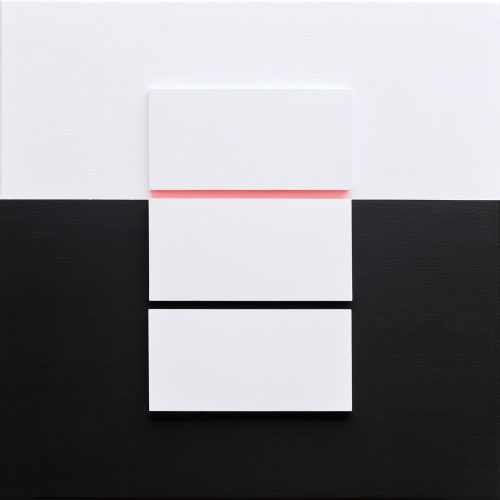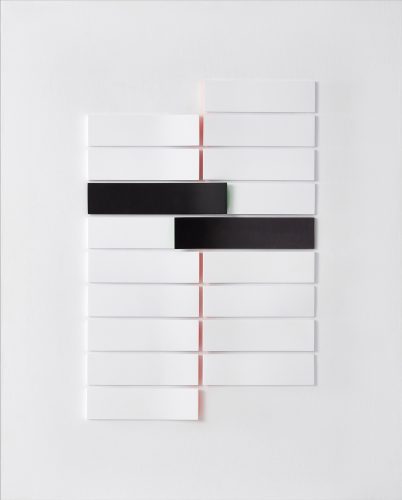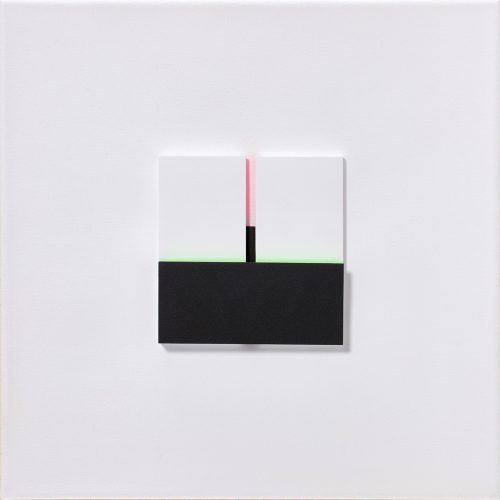


Using maximum austerity, Patrizia Lohan plays with the variables of minimal forms, arranged in a particular order to form a unique constructive design. In fact, her proposal is a set theory applied to art. But unlike other artists working with concrete art, on the whole a cold genre, she infuses her works with a warmth that derives from the intrinsic quality of her materials and a subtle and iridescent colouring which emanates from the interior of the different elements of the series which make them up. These elements never fall into monotony or repetition because their placement (vertically or horizontally) and their form (flat, wavy, fragmented, open, or closed within themselves) offer a dynamism that gives each of her works a unique personality while showing the complementarity between their more rational geometric aspect and the more emotional part which results from the harmony between the forces and the delicate chromatic note that adds to it.
Beyond geometric and constructive rigour, the compositions have a magnetic component, attracting the viewer and calling on them to look from near or far, from right to left or vice versa, until they find the best angle for their aesthetic pleasure.
Patrizia Lohan’s paintings invite visual and mental concentration and remind us of the accurate title of a book published in 1920 by Gestalt psychologist Wolfgang Köhler: “Die physischen Gestalten in Ruhe und im stationären Zustand” (“Physical forms in peace and at in a state of rest”), because these works transmit peace and tranquility.
— Daniel Giralt-Miracle
The passive contemplation is not sufficient in order to enjoy these works in their whole dimension; they are, in equal shares, the result of rigor and sensitivity. This mutable capacity, which depends on the variable external circumstances like direction, distance or intensity of the light, to which the artist adds her ethereal and very significant contribution of color like an “absent presence”, incites the spectator to move around the objects and to get involved in a nearly infinite play of perceptions. We could, therefore, almost distinguish them as interactive, but in a far from banal sense, because these works seduce the glance, they trap us in their magic simplicity and they achieve to become involved in the sphere of mirage, of the unreal and the intangible.
— Raquel Medina de Vargas